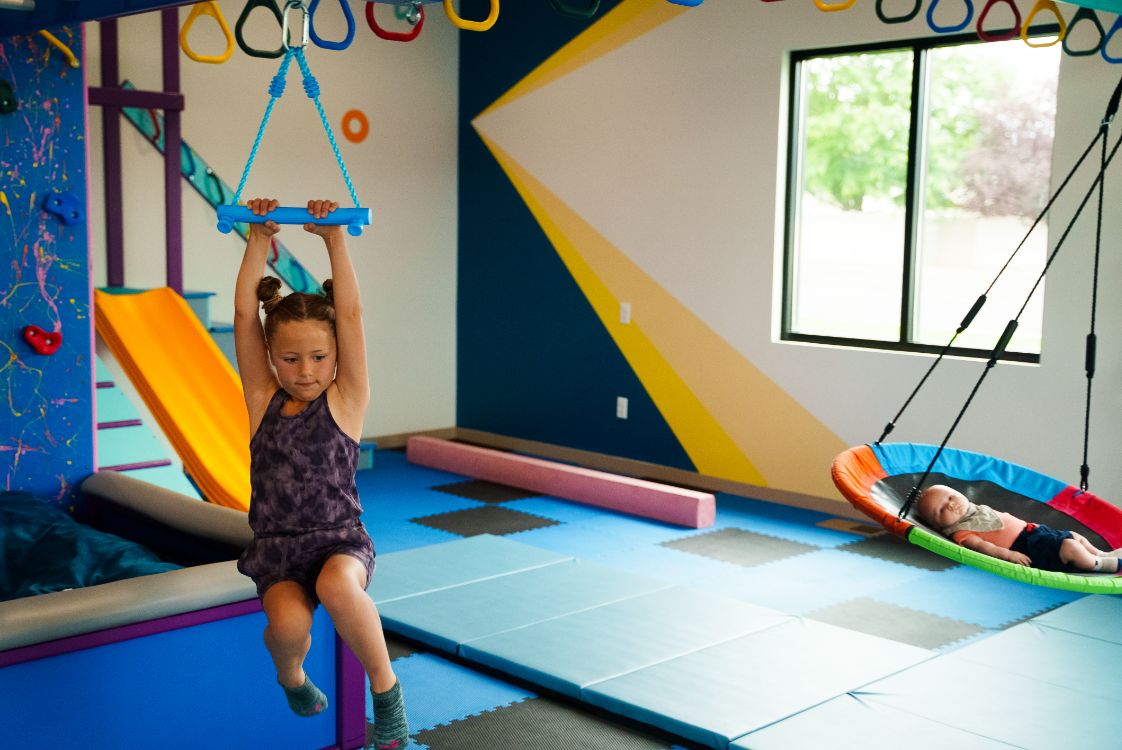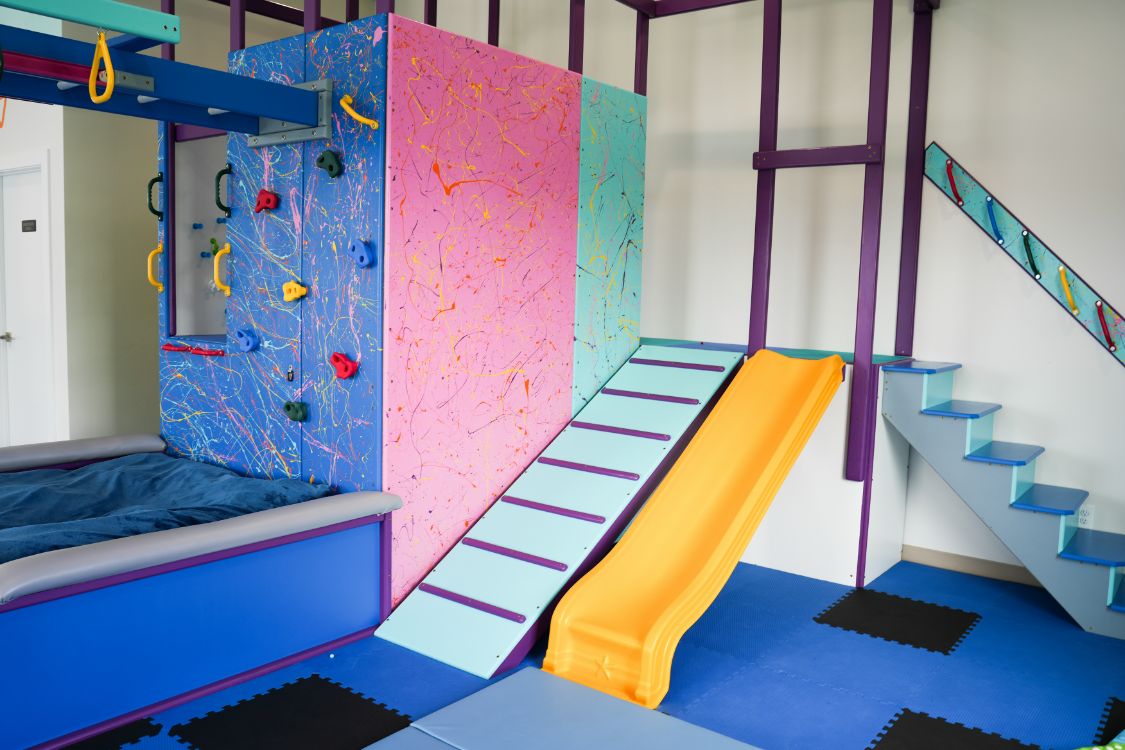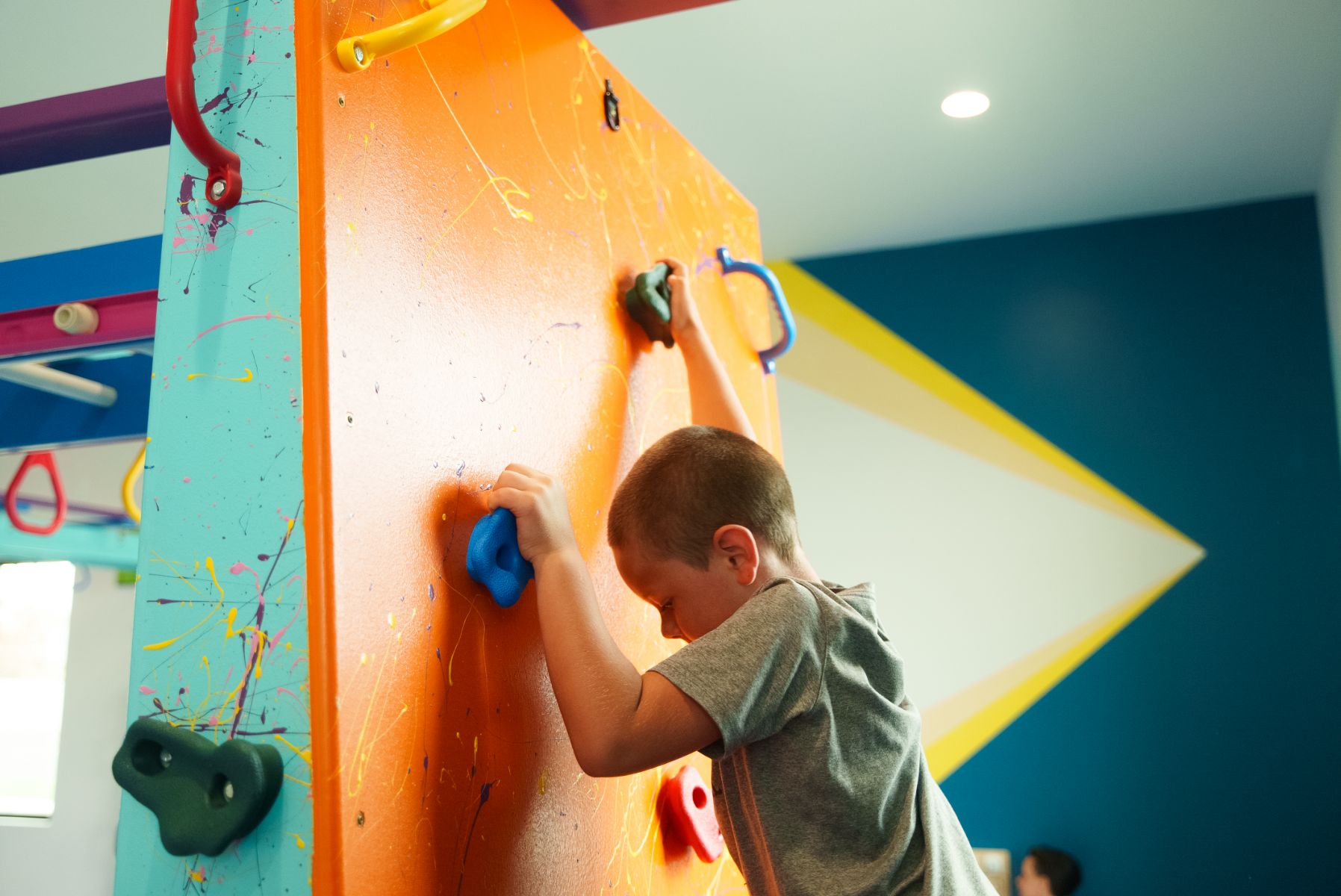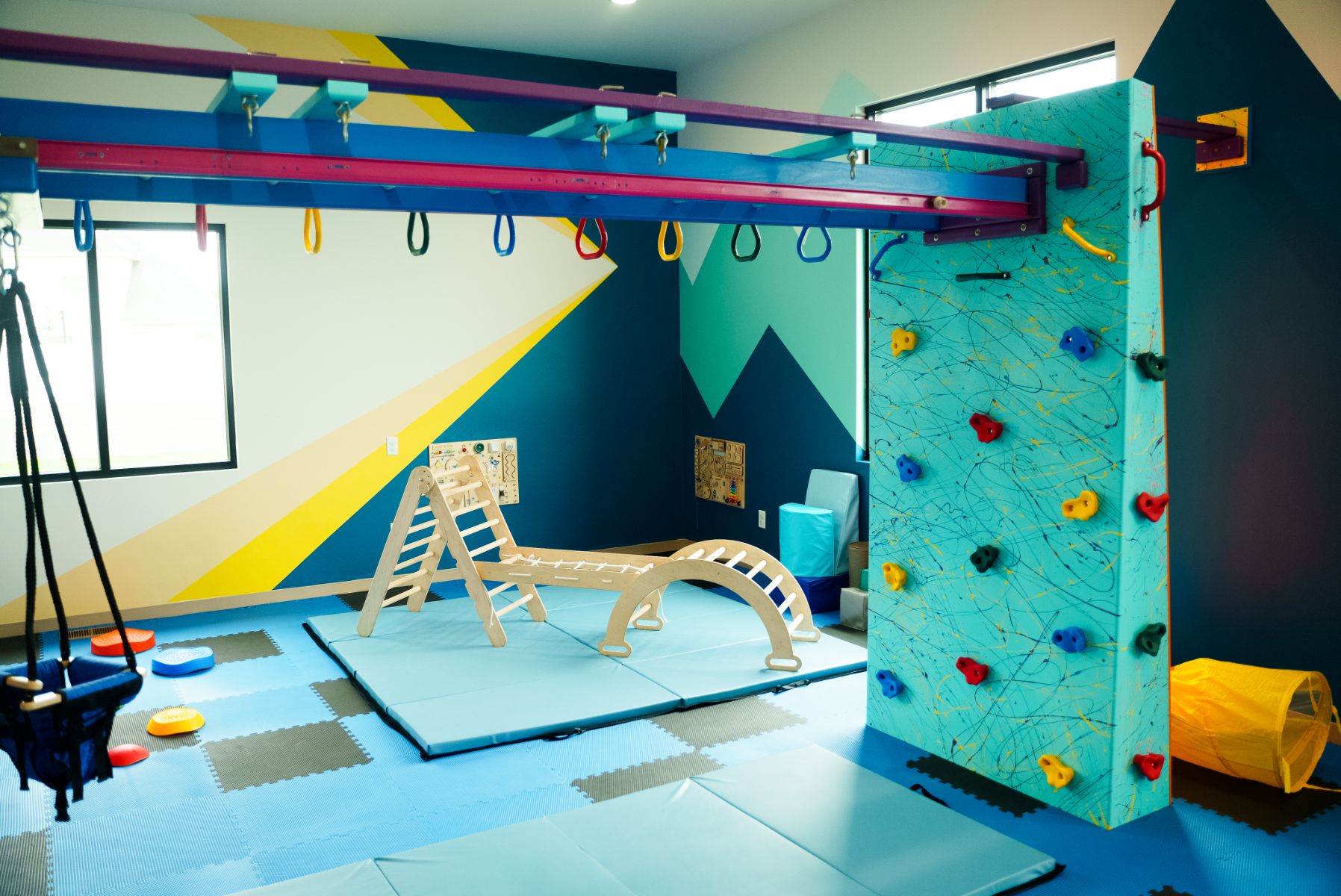Sensory Gym





We are excited to offer a Sensory Gym that not only complements all of our therapy services but also provides community access for children of all abilities. Using the Sensory Gym, children are able to reach therapeutic goals and developmental milestones in a fun and challenging way.
Research shows that there are many benefits when children use a Sensory Gym:
- ●Learning to acclimate to unfamiliar stimuli
- ●Developing a greater sense of independence
- ●Developing sensory and motor skills
- ●Increasing self-esteem
- ●Enhancing communication and social skills
Our Sensory Gym offers overhead jungle gyms, a zip-line with a tracker, suspension swings, a trapeze run, a ladder, a rock climbing wall, therapy balls, over/under tunnels, a foam pit, and a crash pad. It also provides small, quieter seclusion areas, for those times when kids need a break from the visual or physical stimulation. Our trained therapists make sure children are properly introduced to all the stations in our Sensory Gym as they work together.
Public Sensory Gym hours:
Friday: 8:30 a..m. - 5 p.m.
Saturday: 9:00 a.m. - 2 p.m.

Overhead Suspension Swings
Swings offer sensory stimulation for a child’s core strength and balance, as well as their proprioceptive and vestibular senses. Therapy swings are also a great way to manage sensory integration and can help calm kids who have difficulty with sensory overload. They are especially beneficial for children with a sensory processing disorder, autism, sensory impairment, and ADHD. Swings are fun and help kids develop their core strength and gross motor skills.
Trapeze Run
When kids play on the trapeze run, they are strengthening their hands, arms, shoulders, and abdomen. If they kick while hanging and swinging, they also get gross lower-body exercise too. Other benefits include hand strength and dexterity, shoulder stability, development of gross and fine motor skills, and motor planning. Our therapists can adjust the handles on the trapeze run to alter the challenge level for each child.
Zip-Line with Tracker
The zip line offers an excellent way for kids to build upper body strength and muscle endurance, helping them learn to integrate and tolerate movement across the line. The zip-line has a center rotary that allows kids to zip to one end, kick off the rock wall, and then zip back, all while their feet never hit the ground.
Foam Pit
Foam pits are often a favorite with kids because they are brightly colored and exclaim, “fun”! They offer a mild level of body massage, provide high-level auditory, tactile, and visual stimuli, and proprioceptive feedback signals, strengthen sensory motor skills, and help children build confidence. And of course, they create an environment to grow social skills, such as learning to take turns.
Over/Under Tunnel
Many kids love the challenge of crawling through a tunnel system and experiencing the thrill this type of sensory play creates. Tunnels offer several benefits, such as developing gross motor skills, increasing core strength and bilateral coordination, and offering a space to enhance pretend play skills. They can be especially valuable to kids who might have missed a crawling development stage as an infant.
Crash Pad
The crash pad allows kids to jump, flip, tumble, dance, and crash into a safe place. Especially for kids with special needs, a crash pad offers soft security that encourages a child to complete a task and not think about hurting themselves. Crash pads assist with gross motor and balance skills, and tactile sensory development.
Rock Wall, Ladder, and Jungle Gyms
Rock walls, ladders, and jungle gyms offer opportunities to climb, step, swing, and slide, all of which aid in the development of gross motor skills. These gym activities also help develop fine motor skills, when children have to reach and grab for specific parts of the equipment. They also help children develop sensory and imagination skills, by allowing kids to pretend and reach destinations. Bilateral coordination skills are also increased when children learn to coordinate both sides of their bodies.
View photos here!
Gallery


